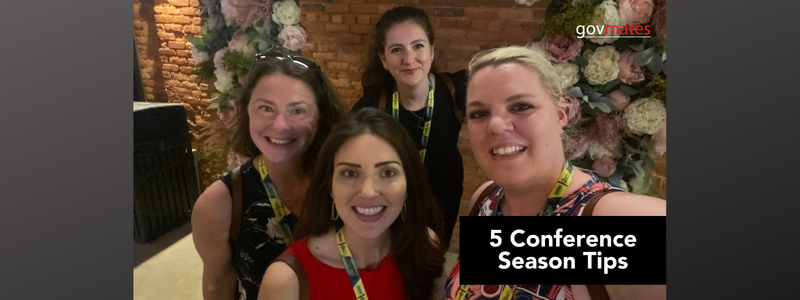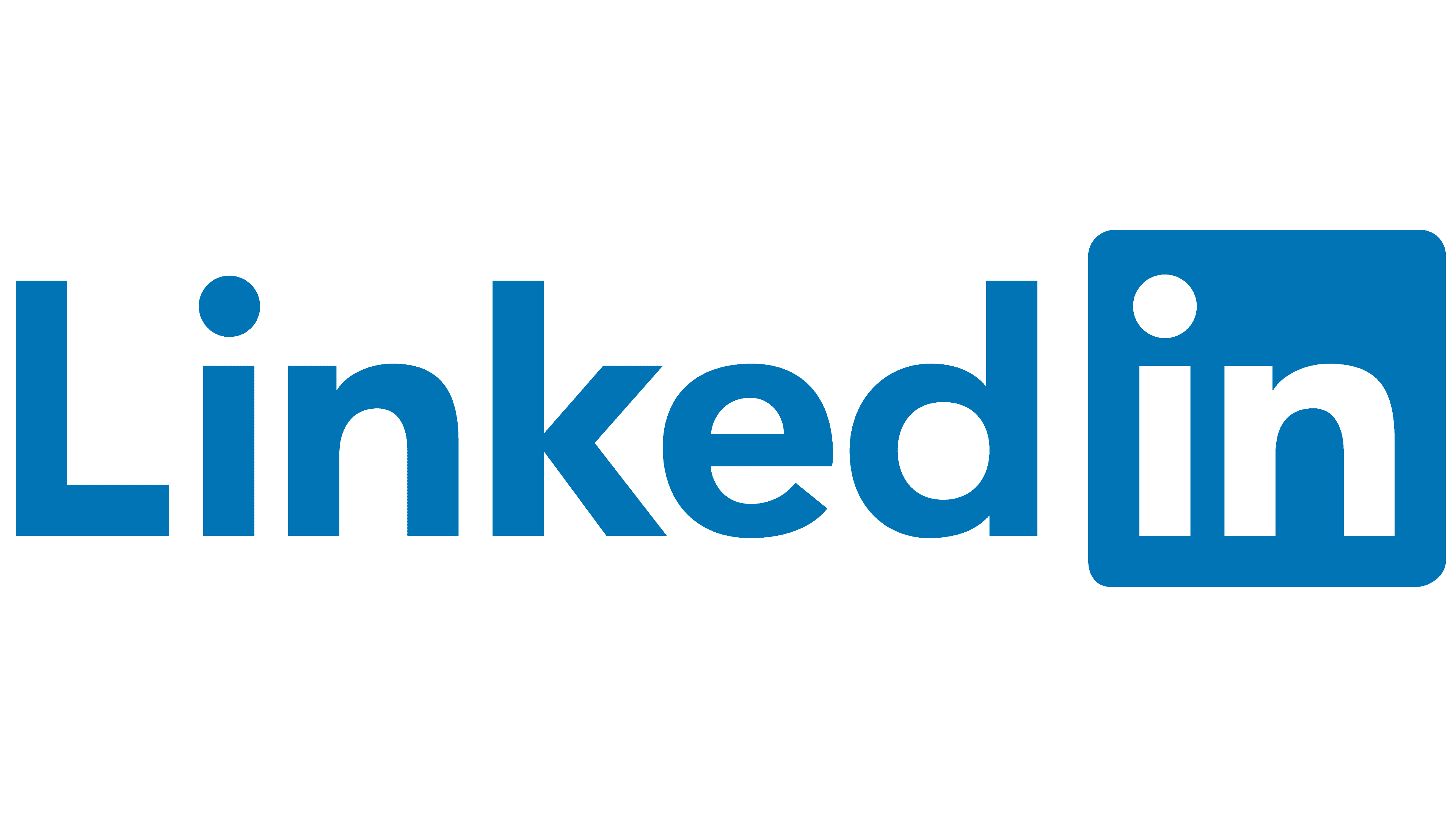5 Tips for Conference Season
-As shared by Meg Kerns.
“It’s the most wonderful time of the….” wait, scratch that, wrong season. But conference season is upon us. I had quite an informative conversation with Chelsea Meggitt of Collaborative Compositions about the best ways to make conference season work for you and your business. You can listen to the conversation in its entirety on the govmates podcast here. From that conversation and my personal experience, I’d like to share five tips that I found to be most actionable for small businesses going forward.
- Have a Plan. There’s no willy or nilly here. You should know where you’re going, why you’re going, and who you’re planning to meet before you even slap down your company card for a ticket to each conference. What does the conference offer your business and how does it align with your future goals? This might be a chance to network or appear in person alongside a unicorn customer or potential teammates. It could also be to learn from industry or government leaders about a specific topic or vertical. Sometimes it’s only one of those and sometimes it’s both – but don’t overdo it. Additionally, “because everyone goes” is not a conference strategy. As part of your plan, reach out to those in your network who are also planning to attend. If you’re traveling cross country, maybe squeeze in a day beforehand if you can to catch up with local people. Coffee meetings, quick, scheduled chats in a nearby lunch location, or quiet couch space may yield better results than ten unplanned booth visits. Tan Wilson (Entellect, LLC) also recently mentioned creating a slack or other messaging channel to connect with peers throughout the event for popular parties, event tidbits, and takeaways. Use the value of connection to get the most out of your event attendance.
- Prepare Your Collateral. Business cards, yes – but make them memorable. No one is going to care if it’s “eggshell with Romalian lettering” or the “subtle coloring and tasteful thickness,” but they will care if they’re useful. I always recommend having some space on the back, in a corner, wherever, with a light color that makes it easy for people to take a note. This allows them to directly connect you with the conversation you had for better follow-up. Do this to their cards as well. Write a note about the conversation or how you need to follow up directly on the card, so you’ll be able to better keep things collated. If you have a one-pager or handout, make it memorable and useful – a checklist, a fact sheet, something that they will want to hold on to rather than a list of your capabilities.
- Know the Layout of the Event Space. Print out the exhibition hall floor plan (normally available on their event websites in advance) because it typically has company names and booth numbers. From there I highlight or star the ones I know I want to stop by whether it’s to visit with peers or for business-building opportunities. I go a step further and include the agenda if I can as well. I’ll add important sessions to my calendar with a 20-minute reminder set ahead of time to ensure I don’t miss out on sessions or speakers I intend to attend. Determine how you’re going to get from session to session, where the lunch or networking spaces will be, and how you plan to utilize any downtimes you may have. (Though truthfully, I rarely find downtime at conferences, especially the good ones.)
- Pack Smart. You’re going to be in sessions, meetings, or the exhibit hall all day, and chances are if you’re budget conscious, you’re not staying directly on location at the event. If you don’t have a “home base” booth or otherwise for the event you’re going to want to have everything on hand. I don’t recommend a computer unless you know you’re going to be doing dual-hand typing or similar tasks. If you bring your computer all the way to an event and haven’t pulled it out during the day, even once, it’s just an expensive paperweight that is taking up valuable swag space. My go-to is usually a backpack/bag that has my file of important conference information (my agenda and floor plan notes), phone, charger, and/or power bank, headphones for any calls that come up, business cards, a small notebook, and a couple of pens. I would also suggest a refillable water bottle, ChapStick, and your wallet (most likely with your vaccine card these days). More intense tasks such as email or conference follow-up can be done back in your hotel room or home office where you can kick off your shoes and have a snack while you work. You’re there to cover serious conference ground (hello step-counters) not to be an office supply pack-mule.
- Follow Up with a Purpose. I send LinkedIn requests to those I’ve had a quick conversation with at a booth or in passing directly following the meeting. I have a note saved on my phone that I can copy and quickly adjust to mention pieces of our discussion that seemed memorable and relevant. This can be done on the walk between booths or while waiting for new sessions to begin (hence the phone charger mentioned previously). The individualized touch is what makes the connection healthier and more valuable to all parties involved. Post-event I categorize my new business card collection by task value: 1. Those who need specific, direct follow-up come first, followed by 2. Those who have a general parallel or mutual interest but no immediate actions to keep the connection fresh and 3. Those who require a handoff or introduction to someone in the company or elsewhere. Note that I’m not condoning the mass import to your CRM for next week’s newsletter blast, but I would recommend including an earlier newsletter in your follow-up and asking if they’d like to be added to future outreach communications.
Whittling this list down to just five important things proved to be a difficult task as there are a variety of ways to find value in the conference and networking circuit for our industry. I would encourage you to try out one or two at a time to see where the value exists for your flavor of connection and growth. For more tips, I encourage you to listen to the govmates Next Gen podcast (linked above) and follow the conference savvy connections you may have on LinkedIn (don’t forget to add govmates to that list). We’ll see you on the conference scene!




